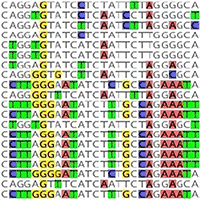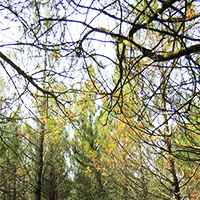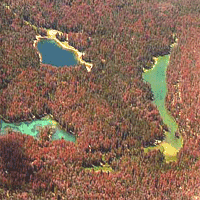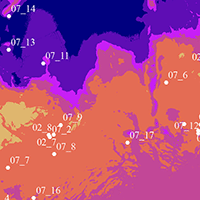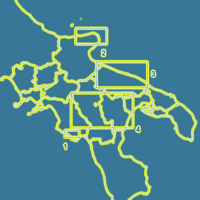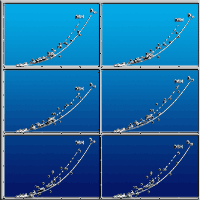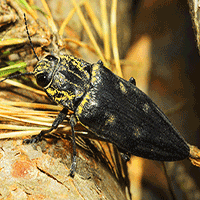
Long-term changes in surface-active beetle communities in a post-fire successional gradient in Pinus brutia forests
iForest - Biogeosciences and Forestry, Volume 10, Issue 2, Pages 376-382 (2017)
doi: https://doi.org/10.3832/ifor2140-009
Published: Mar 16, 2017 - Copyright © 2017 SISEF
Research Articles
Abstract
Fire is one of the most important ecological factors for many ecosystem types. Since prehistoric times, synergistic effects of fires and humans have led to changes in Eastern Mediterranean ecosystems. The effects of fire on different trophic levels, particularly regarding plants, have been examined intensively in fire-induced ecosystems. In this study, we aimed to study long-term changes in beetle community structure after fire in Pinus brutia Ten. forests. Five sites burned in different years and a control site unburned for at least 50 years were selected. Beetle sampling was conducted using four pit-fall traps in each of four transects in three replication plots at every successional site and in two plots at the control site. Microhabitat variables related to vegetation structure and litter layer were recorded and associated with abundances of beetles and feeding groups. The results showed that total, wood-eating, and predator beetles showed a decreasing trend of abundance along the successional gradient after fire. In contrast to these groups, herbivores tended to increase towards the late successional stages. Middle and late successional stages were important in terms of species richness, species diversity and evenness of beetle communities and feeding groups. The characteristics of vegetation and litter layer changed with successional gradient, playing a decisive role in the structure of beetle communities at successional sites. According to the data presented here, a mosaic structure consisting of different successional stages is very important to sustain high species diversity in beetle communities.
Keywords
Forest Fires, Coleoptera, Brutia Pine, Resilience, Autosuccession
Authors’ Info
Authors’ address
Mehmet Akif Ersoy University, Faculty of Science and Arts, Department of Biology, Istiklal Campus, Burdur (Turkey)
Corresponding author
Paper Info
Citation
Kaynas BY (2017). Long-term changes in surface-active beetle communities in a post-fire successional gradient in Pinus brutia forests. iForest 10: 376-382. - doi: 10.3832/ifor2140-009
Academic Editor
Massimo Faccoli
Paper history
Received: Jun 16, 2016
Accepted: Oct 12, 2016
First online: Mar 16, 2017
Publication Date: Apr 30, 2017
Publication Time: 5.17 months
Copyright Information
© SISEF - The Italian Society of Silviculture and Forest Ecology 2017
Open Access
This article is distributed under the terms of the Creative Commons Attribution-Non Commercial 4.0 International (https://creativecommons.org/licenses/by-nc/4.0/), which permits unrestricted use, distribution, and reproduction in any medium, provided you give appropriate credit to the original author(s) and the source, provide a link to the Creative Commons license, and indicate if changes were made.
Web Metrics
Breakdown by View Type
Article Usage
Total Article Views: 49969
(from publication date up to now)
Breakdown by View Type
HTML Page Views: 42558
Abstract Page Views: 3007
PDF Downloads: 3267
Citation/Reference Downloads: 21
XML Downloads: 1116
Web Metrics
Days since publication: 3181
Overall contacts: 49969
Avg. contacts per week: 109.96
Citation Metrics
Article Citations
Article citations are based on data periodically collected from the Clarivate Web of Science web site
(last update: Mar 2025)
Total number of cites (since 2017): 6
Average cites per year: 0.67
Publication Metrics
by Dimensions ©
Articles citing this article
List of the papers citing this article based on CrossRef Cited-by.
References
Studies on long-term effects of fire on small mammal community and changes of community structure after fire in Pinus brutia forest ecosystems, PhD Thesis, Institute of Natural Sciences, Hacettepe University, Turkey, pp. 112. [in Turkish with English abstract]
Gscholar
The impact of fire on animal communities in Mediterranean Area. In: “The Role of Fire in Ecological Systems” (Trabaud L ed). SPA Academic Publishing, The Hague, Netherlands, pp. 121-157.
Gscholar
Effects of fire on soil microarthropods of a phryganic system. Pedobiologia 37: 83-94.
Gscholar
Canoco for Windows version 4.5. Biometris-Plant Research International, Wageningen, Netherlands.
Gscholar
Early post-fire regeneration in Pinus brutia forest ecosystems of Samos island (Greece). Acta Oecologica 10 (1): 79-94.
Gscholar
Post-fire regeneration of Pinus halepensis forests in the West Mediterranean. In: “Ecology, Biogeography and Managenement of Pinus halepensis and Pinus brutia Forest Ecosystems in the Mediterranean Basin (Ne’eman G, Trabaud L eds). Backhuys Publishers, Leiden, The Netherlands, pp. 257-268.
Gscholar
Effects of experimental burning on ground-living invertebrates in a Swedish pine forest: interactions between fire-severity and logging. In: Proceedings of the “3rd International Conference on Forest Fire Research, 14th Conference on Fire and Forest Meteorology” (Viegas DX ed). Luso (Coimbra, Portugal) 16-20 Nov 1998, vol. II, pp. 1447-1464.
Gscholar
Pyrophilic or pyrophobic? The response of forest beetle communities to an altered fire regime. In: Proceeding of Conference “Forest Fire Research and Wildland Fire Safety” (Viegas X ed). Luso, Coimbra (Portugal) 18-23 Nov 2002. Millpress, Rotterdam, Netherlands. [CD-ROM]
Gscholar


